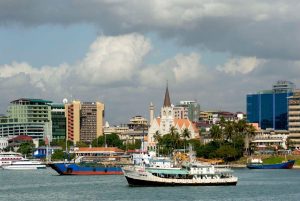The world’s commercial aircraft fleet is forecast by Airbus to more than double to almost 48,000 by 2038.
Of the expected 47,680-strong fleet, 39,210 aircraft will be new with 8,470 remaining from today.
This will result in the need for 550,000 new pilots and 640,000 technicians with traffic growth of 4.3% a year.
The European manufacturer believes that by updating fleets with latest generation fuel efficient aircraft such as the A220, A320neo family, A330neo and A350, it will “largely contribute” to the “progressive decarbonisation” of the air transport industry.
This will enable the company to meet the objective of carbon neutral growth from 2020 while connecting more people globally.
Airbus has simplified its segmentation to consider capacity, range and flight type to reflect today’s evolving aircraft technology.
A short haul A321 is small while the long-haul A321LR or XLR can be categorised asmedium.
While the core market for the wide-body A330 is classified as medium, it is likely a number will continue to be operated by airlines in a way that sits within the large market segmentation along with the bigger A350 XWB, according to Airbus. This segment will also be served by the A380 at the upper end, although production of the superjumbo ends in 2021 due to falling demand.
This new segmentation gives rise to a need for 39,210 new passenger and freighter aircraft – 29,720 small, 5,370 mediumand 4,120 large – according to Airbus’ latest global market forecast for 2019-2038.
Of these, 25,000 aircraft are for growth and 14,210 are to replace older models with newer ones offering “superior efficiency”.
Airbus and US rival Boeing are expected to account for the bulk of the demand for the almost 40,000 new aircraft by 2038.
Airbus said: “Resilient to economic shocks, air traffic has more than doubled since 2000. It is increasingly playing a key role in connecting large population centres, particularly in emerging markets where the propensity to travel is amongst the world’s highest as cost or geography make alternatives impossible.
“Today, about a quarter of the world’s urban population is responsible for more than a quarter of global GDP, and given both are key growth drivers, aviation mega cities will continue to power the global aviation network.
“Developments in superior fuel efficiency are further driving demand to replace existing less fuel efficient aircraft.”
Chief commercial officer and head of Airbus International, Christian Scherer (pictured), said: “The 4% annual growth reflects the resilient nature of aviation, weathering short term economic shocks and geo-political disturbances. Economies thrive on air transportation. People and goods want to connect.
“Globally, commercial aviation stimulates GDP growth and supports 65 million livelihoods, demonstrating the immense benefits our business brings to all societies and global trade.”



